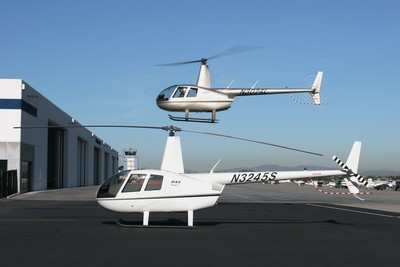Tue, Sep 04, 2012
New Hampshire Company Granted EASA STC For Auto Gas In Robinson Model R44
The European Aviation Safety Agency (EASA) has granted an STC to New Hampshire-based JTI Air Holdings allowing the operation of Robinson Model R44 helicopters using automotive gasoline for fuel. The company sells certificates that allow pilots in the United States and other countries to fly helicopters using cost-saving automotive gas.

The company says that using automotive gasoline as an alternative helicopter fuel is not only better for the environment, but also more cost efficient, says company executive Howard Fuller. Leaded aviation fuel is being phased out worldwide due to environmental concerns. In the U.S., automotive gasoline that meets ASTM specification D8414 has been approved for helicopter use for several years under STCs that were jointly developed by Fuller and U.S.-based Peterson Aviation. In Europe, aircraft operators are feeling the pressure of leaded fuel being discontinued. Operators of the popular Robinson R22 and R44 piston-engine powered helicopters, many of whom fly in remote areas, are scrambling to find alternative helicopter fuels.
Savings when flying with auto gas are expected to be between $15 to $25 per hour when compared to either 100LL aviation fuel or its replacement, 91UL. Similar operations for the R22 helicopter have been “grandfathered” under British CAA Airworthiness Approval Note No. 27743, Issue 2.
FAA test results show the R44 used approximately 3/4 gallon less fuel per hour, and hovered on about 1” less manifold pressure than when operated on 100LL aviation gas.
EASA, in accordance with the recently signed EU-USA Bilateral Airworthiness Safety Agreement, issued STC No. 10041028 to Fuller on Aug. 16. The certificate permits the operation of European R44 helicopters using 91-octane automotive gasoline. In Europe, JTI's automotive gasoline supplemental type certificates (STCs) are sold by company representative Joop van Weele of Holland.
(R44 file photo)
More News
Back-Taxi A term used by air traffic controllers to taxi an aircraft on the runway opposite to the traffic flow. The aircraft may be instructed to back-taxi to the beginning of the>[...]
“Our WAI members across the nation are grateful for the service and sacrifice of the formidable group of WASP who served so honorably during World War II. This group of brave>[...]
“Many aspiring pilots fall short of their goal due to the cost of flight training, so EAA working with the Ray Foundation helps relieve some of the financial pressure and mak>[...]
Blind Speed The rate of departure or closing of a target relative to the radar antenna at which cancellation of the primary radar target by moving target indicator (MTI) circuits i>[...]
Aero Linx: International Airline Medical Association (IAMA) The International Airline Medical Association, formerly known as the Airline Medical Directors Association (AMDA) was fo>[...]
 ANN's Daily Aero-Term (05.19.24): Back-Taxi
ANN's Daily Aero-Term (05.19.24): Back-Taxi Aero-News: Quote of the Day (05.19.24)
Aero-News: Quote of the Day (05.19.24) Aero-News: Quote of the Day (05.20.24)
Aero-News: Quote of the Day (05.20.24) ANN's Daily Aero-Term (05.20.24): Blind Speed
ANN's Daily Aero-Term (05.20.24): Blind Speed ANN's Daily Aero-Linx (05.20.24)
ANN's Daily Aero-Linx (05.20.24)



